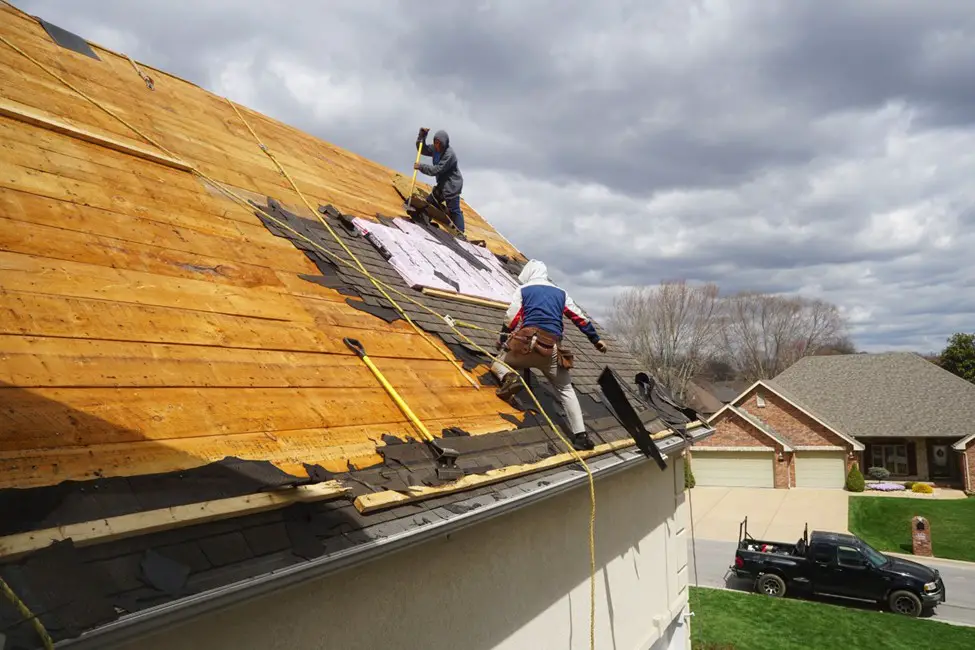Your roof is your home’s first line of defense against the elements. From heavy rain and snow to blistering sun and high winds, your roof takes a beating year-round. Yet, it’s easy to forget about it—until there’s a leak, missing shingles, or worse. Preventing damage is always more affordable than paying for major repairs or a full replacement. With a little proactive care, you can extend the life of your roof and avoid costly surprises down the line. Here are the top tips to keep your roof in excellent condition.
1. Schedule Regular Roof Inspections
The most effective way to avoid roof damage is to catch small problems before they become big ones. Schedule professional inspections at least once a year, preferably in the spring or fall. A roofer can spot early signs of wear and tear such as cracked shingles, loose flashing, or moss buildup. If your area experiences extreme weather, it’s wise to have your roof inspected afterward to assess any damage.
2. Clean Gutters Regularly
One of the leading causes of roof damage is clogged rain gutters. When gutters become filled with leaves, twigs, and other debris, water can overflow or back up beneath your shingles, leading to leaks, wood rot, and even foundation issues. Regular maintenance is key—ideally, gutters should be cleaned at least twice a year, and more often if your property has a lot of surrounding trees. For homeowners in Salt Lake City, professional rain gutter cleaning services can ensure your system stays clear and functional, especially before the snowy winters and spring rains hit.
3. Trim Overhanging Tree Branches
Trees add beauty and shade to your yard, but branches that hang over your roof can be hazardous. They may scrape against your shingles, strip off protective granules, or break and fall during storms. Additionally, leaves and pine needles from these branches can collect on your roof and in your gutters, encouraging moisture retention and mold growth. Regularly trimming trees near your roof reduces these risks.
4. Check for Signs of Leaks
Water stains on ceilings, musty smells in the attic, or peeling paint on walls may signal a roof leak. Even small leaks can lead to mold, rot, and structural damage over time. If you notice any of these warning signs, act fast. Delaying repairs allows the damage to worsen and may result in more expensive fixes later.
5. Maintain Proper Attic Ventilation
Poor attic ventilation can lead to moisture buildup and increase the risk of ice dams in winter. When warm air rises from your home and becomes trapped in an unventilated attic, it can cause shingles to deteriorate prematurely and lead to moisture issues. Make sure your attic has proper intake and exhaust vents to promote airflow and regulate temperature.
6. Keep an Eye on Flashing
Flashing is the metal material used around roof joints, chimneys, skylights, and vents to keep water out. Damaged or improperly installed flashing is a common entry point for leaks. During inspections or after a storm, look closely at these areas and ensure that flashing is secure and intact. Re-sealing or replacing flashing is a relatively inexpensive way to prevent water intrusion.
7. Remove Moss and Algae Promptly
Moss and algae may give your roof a rustic charm, but they can be destructive. Moss traps moisture, leading to wood rot and shingle damage, especially on roofs that don’t get much sun. Use a roof-safe cleaner to gently remove moss or hire a professional for the job. Avoid pressure washing, which can damage shingles.
8. Avoid Walking on the Roof
It may be tempting to climb up and inspect your roof yourself, but walking on shingles can cause granule loss and even create cracks. If you must access your roof, use proper safety equipment and walk gently on designated paths. Better yet, leave detailed inspections and maintenance to roofing professionals.
9. Address Minor Repairs Immediately
Loose shingles, lifted flashing, or minor holes might seem harmless at first glance, but they can open the door to water infiltration and costly repairs. Take care of small fixes as soon as you notice them. A simple repair today can save you from a full roof replacement tomorrow.
10. Invest in Quality Roofing Materials
If you’re building a new home or replacing an old roof, don’t cut corners. High-quality shingles, underlayment, and flashing materials may cost more upfront but offer greater durability and weather resistance. Consider impact-resistant shingles if you live in an area prone to hail or storms.
Final Thoughts
Your roof works hard to protect your home, and it deserves regular care in return. By taking preventive steps—like regular inspections, cleaning gutters, and trimming trees—you can keep your roof in great shape and avoid costly damage. Being proactive now means peace of mind later, knowing your home is well protected from above.



